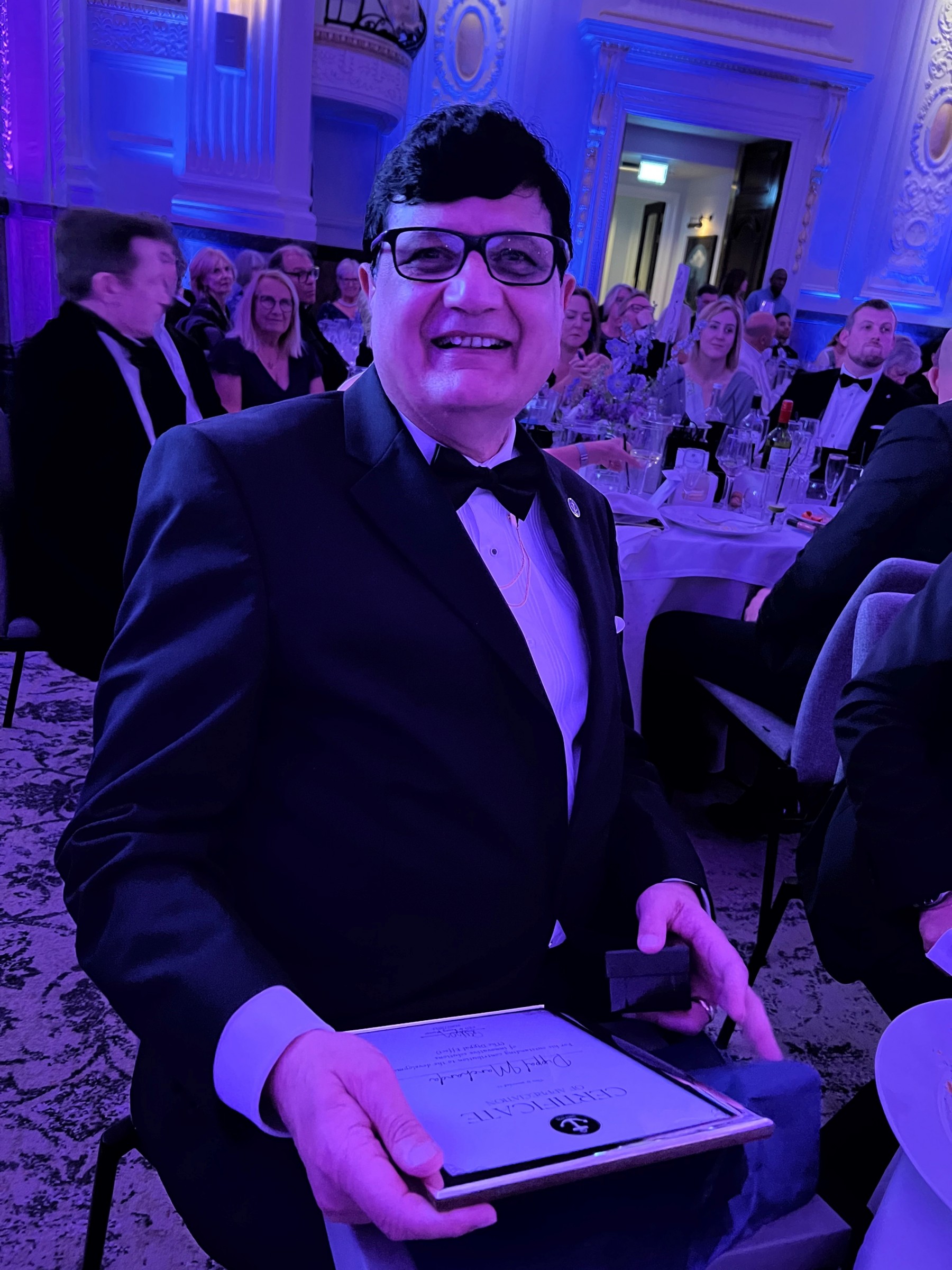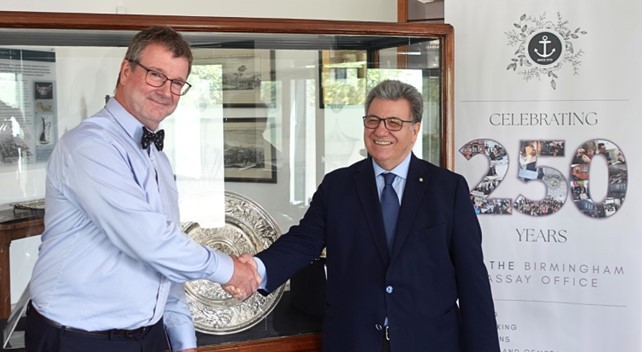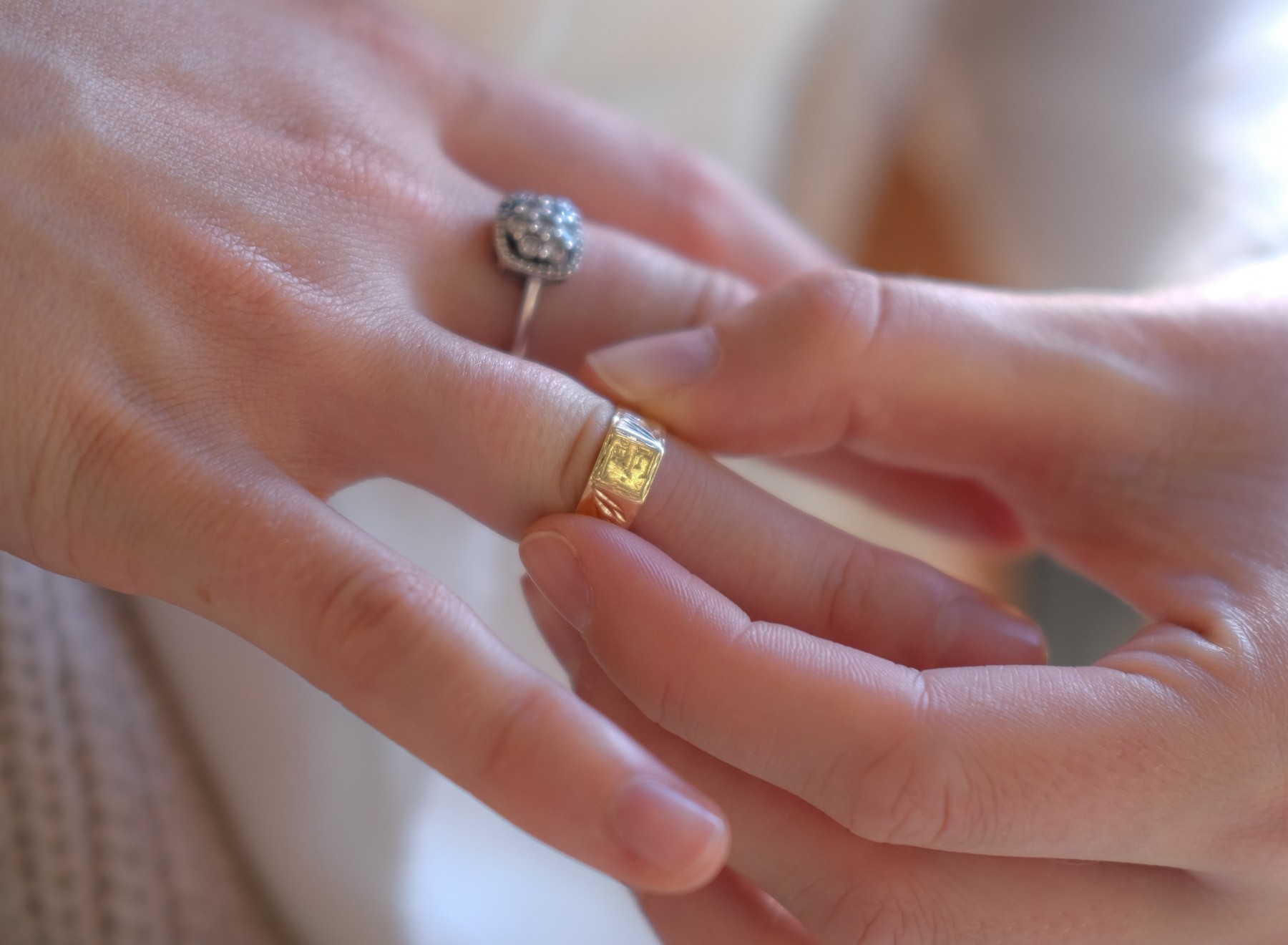 The British Jewellersâ Associationâs (BJA) competition to design and make a brooch for the Queen has been whittled down to six finalists who will now battle it out to win the honour of creating their celebratory Jubilee design for Her Majesty.
The six shortlisted designers have been named as Andrew Everest Fine Jewellery, Gwyneth Harris Fine Jewellery, Harriet Bedford, Ivonna Poplanska, Kasun London and Lynsey Pluck Jewellery.
They were selected by a panel of judges at the BJAâs headquarters last week. The judges included Professional Jeweller editor-in-chief Rachael Taylor, jewellery designer and JeDeCo head Cindy Dennis Mangan, jewellery designer Ruth Tomlinson, Green & Benz director Helen Dimmick and the BJAâs Lindsay Straughton.
The designs cross a spectrum of themes, from fireworks through to bees and doves. Each designer was asked to consider metals and gemstones donated by members of the industry in their sketches. They were also encouraged to incorporate the national flowers of England, Wales, Scotland and Ireland as well as coloured diamonds.
Andrew Everestâs design, The Firework Brooch, was inspired by a firework display that took place over Buckingham Palace earlier this summer. The design included 60 small diamonds to represent the Queenâs 60 years on the throne and 54 marquise diamonds to represent the Commonwealth countries. A total .86ct of round brilliant diamonds would also feature as a celebration of the Queenâs age. The main part of the brooch would be made of platinum with multi coloured gold fused to the ends, from Wales, Scotland and England and the whole brooch would be mounted en tremblent, to give it a delicate movement when worn.
Gwyneth Harris presented a design called Garland of Four British National Flowers and Six Commonwealth Bangles. The piece is inspired by the wearing of bangles, which Harris recognised as the first piece of jewellery worn by men and women in some of the poorer nations in the Commonwealth. The piece also features the four national flowers, with diamonds set in reverse to give the thistle part of the brooch a certain prickliness.
Harriet Bedfordâs design, The Floral Time Capsule, encapsulates the history, growth and status of the UK and the monarchy. It features a diamond at the centre to represent the Queenâs elevated role, but also her solitariness. The 60 strands surrounding the stone represent the Queenâs reign, while gold details pick out strands of DNA, which was discovered in Britain in 1962, and the London 2012 Olympics, with a leaf design chosen to represent the importance of the countryside in British culture. On the base of the brooch is a section decorated with binary digits.
Ivonna Poplanskaâs shortlisted design is called the The Eternal Dove and is said to be inspired by an existing Crown Jewel called the Sceptre with Dove, originally made for the Coronation of King Charles II in 1661. The brooch aims to continue the theme of the dove as a sign of peace and unity. Poplanska aims to use the gold offered from mines across the UK and the piece will be decorated with the national flowers of England, Scotland, Wales and Northern Ireland, the dove represents the citizens of a Kingdom united. The dove is depicted as in flight to represent how the design has developed from its 1660âs counterpart to the freedom of today.
The Queen Bee brooch is the shortlisted entry by Kasun London and features an intricate design of branches, flowers and leaves made in platinum, a bee made from a combination of the various golds and a total 255 diamonds. The design takes inspiration from the way in which the Queen has presided over the UK and the Commonwealth over the last sixty years and combines this with the majesty of nature. The four national flowers also features and the brooch is decorated with 27 small leaves set with two white diamonds, each representing one of the 54 Commonwealth member states.
Finally Lynsey Pluckâs Leading Light brooch features six radial sections designed to appear like diamond-encrusted rays connected by six arms of English, Welsh, Scottish and Irish gold, representing the six decades. An oak leaf also features as a symbol of strength, durability and longevity, with a total of 54 rays to represent the Commenwealth countries. On the back of the brooch there are three supporting gold arms which represent her familyâs support â that of King George V, The Queen Mother and her husband Prince Phillip, Duke of Edinburgh.
The BJA is encouraging the industry and wider public to vote for their preferred design online through their website. http://www.bja.org.uk/en/bja-diamond-jubilee-brooch-competition/shortlist-vote-now/index.cfm
The British Jewellersâ Associationâs (BJA) competition to design and make a brooch for the Queen has been whittled down to six finalists who will now battle it out to win the honour of creating their celebratory Jubilee design for Her Majesty.
The six shortlisted designers have been named as Andrew Everest Fine Jewellery, Gwyneth Harris Fine Jewellery, Harriet Bedford, Ivonna Poplanska, Kasun London and Lynsey Pluck Jewellery.
They were selected by a panel of judges at the BJAâs headquarters last week. The judges included Professional Jeweller editor-in-chief Rachael Taylor, jewellery designer and JeDeCo head Cindy Dennis Mangan, jewellery designer Ruth Tomlinson, Green & Benz director Helen Dimmick and the BJAâs Lindsay Straughton.
The designs cross a spectrum of themes, from fireworks through to bees and doves. Each designer was asked to consider metals and gemstones donated by members of the industry in their sketches. They were also encouraged to incorporate the national flowers of England, Wales, Scotland and Ireland as well as coloured diamonds.
Andrew Everestâs design, The Firework Brooch, was inspired by a firework display that took place over Buckingham Palace earlier this summer. The design included 60 small diamonds to represent the Queenâs 60 years on the throne and 54 marquise diamonds to represent the Commonwealth countries. A total .86ct of round brilliant diamonds would also feature as a celebration of the Queenâs age. The main part of the brooch would be made of platinum with multi coloured gold fused to the ends, from Wales, Scotland and England and the whole brooch would be mounted en tremblent, to give it a delicate movement when worn.
Gwyneth Harris presented a design called Garland of Four British National Flowers and Six Commonwealth Bangles. The piece is inspired by the wearing of bangles, which Harris recognised as the first piece of jewellery worn by men and women in some of the poorer nations in the Commonwealth. The piece also features the four national flowers, with diamonds set in reverse to give the thistle part of the brooch a certain prickliness.
Harriet Bedfordâs design, The Floral Time Capsule, encapsulates the history, growth and status of the UK and the monarchy. It features a diamond at the centre to represent the Queenâs elevated role, but also her solitariness. The 60 strands surrounding the stone represent the Queenâs reign, while gold details pick out strands of DNA, which was discovered in Britain in 1962, and the London 2012 Olympics, with a leaf design chosen to represent the importance of the countryside in British culture. On the base of the brooch is a section decorated with binary digits.
Ivonna Poplanskaâs shortlisted design is called the The Eternal Dove and is said to be inspired by an existing Crown Jewel called the Sceptre with Dove, originally made for the Coronation of King Charles II in 1661. The brooch aims to continue the theme of the dove as a sign of peace and unity. Poplanska aims to use the gold offered from mines across the UK and the piece will be decorated with the national flowers of England, Scotland, Wales and Northern Ireland, the dove represents the citizens of a Kingdom united. The dove is depicted as in flight to represent how the design has developed from its 1660âs counterpart to the freedom of today.
The Queen Bee brooch is the shortlisted entry by Kasun London and features an intricate design of branches, flowers and leaves made in platinum, a bee made from a combination of the various golds and a total 255 diamonds. The design takes inspiration from the way in which the Queen has presided over the UK and the Commonwealth over the last sixty years and combines this with the majesty of nature. The four national flowers also features and the brooch is decorated with 27 small leaves set with two white diamonds, each representing one of the 54 Commonwealth member states.
Finally Lynsey Pluckâs Leading Light brooch features six radial sections designed to appear like diamond-encrusted rays connected by six arms of English, Welsh, Scottish and Irish gold, representing the six decades. An oak leaf also features as a symbol of strength, durability and longevity, with a total of 54 rays to represent the Commenwealth countries. On the back of the brooch there are three supporting gold arms which represent her familyâs support â that of King George V, The Queen Mother and her husband Prince Phillip, Duke of Edinburgh.
The BJA is encouraging the industry and wider public to vote for their preferred design online through their website. http://www.bja.org.uk/en/bja-diamond-jubilee-brooch-competition/shortlist-vote-now/index.cfm
Your item has been added to the basket
You need to create an account, or login before you can add this item to your basket.







